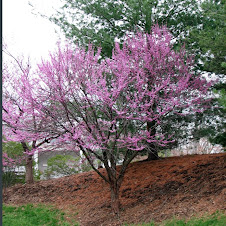Poppies and Patriotism Symbolize the Red of Sacrifice
Earlier this week. I recalled just how important the upcoming November 11 holiday is when I attended an elementary school
Veterans' Day concert put on by first grade students.
Many readers like myself, school-age during the 1930s and 40s, learned that the 11th hour of the 11th day of the 11th month marked the temporary cessation of hostilities between the Allied nations and Germany at the turn of the 20th century. We were very used to seeing veterans selling paper poppies to mark Armistice Day. In 1954,
President Dwight D. Eisenhower declared November 11 as Veterans' Day. Veterans groups still sell red paper poppies and have carried over the tradition to Memorial Day in May.
What do poppies and patriotism have to do with landscaping? The corn poppy or Flanders poppy
(Papaver rhoeas) can be an important part of wildflower meadows or early summer annual planting beds. Now is a good time to start thinking about and planning for growing season - 2008 before the oncoming Thanksgiving and December holidays.
Below are some synopses of
Suite101 Landscaping blogs and articles about growing and using poppies in garden landscapes:
Here is a copy of "In Flanders Fields" written by Canadian military doctor Colonel John McCrae in 1915 who used the imagery of red poppies (Papaver rhoeas) in landscapes of "The Great War."
When William Shakespeare (1564-1616) wrote about "all the idle weeds that grow...in our sustaining corn," he had in mind wheat, barley, and oat fields of medieval England.
Flanders field poppies (Papaver rhoeas) brighten European landscapes in early summer. Here in the U.S., they symbolize Veterans' Day (autumn) and Memorial Day, originally called Decoration Day (spring).
"Poppies and Landscapes of War" elicited a note from an old friend of mine that is shared here. He comments about poppies and the Memorial Day parade in his town.
Sweeping landscape plantings of the corn (Flanders's Field) poppy and its cousins are a knockout. These plants are true annuals though they may live for several seasons.
Government and private groups work to bring color to highway and commercial landscapes. Annual poppies add flair and dazzle to large wildflower plantings.
Early temperate season uniform poppy beds require planning and design to focus attention on residential and commercial landscapes. Presented is a planting sequence for Zone 5.
Annual poppies bring unity to wildflower meadows or a natural garden as well as create a breath-taking display. Seeds of annual poppies are easy to find and buy.
Seaside and sheltered landscape plantings and herb gardens present some down-to-earth examples for using annual poppies in natural-appearing gardens.






